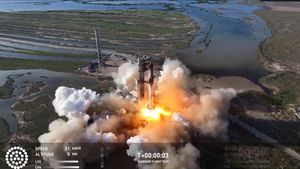Space exploration is entering new frontiers, and the Polaris Dawn mission stands at the forefront of this evolution, marking significant milestones not just for commercial spaceflight but for humanity's aspirations beyond Earth. This mission, undertaken by the tech billionaire Jared Isaacman and his adept crew, delivered historical moments on September 15, 2024, when they conducted the first-ever spacewalk by private astronauts.
Jared Isaacman, who previously led the historic Crew Dragon mission Inspiration4, helmed this mission aboard SpaceX’s Dragon spacecraft, venturing farther from Earth than any human has since the Apollo Moon landings. During this groundbreaking mission, Isaacman collaborated with SpaceX engineer Sarah Gillis to test innovative new spacesuits developed for extravehicular activity (EVA). Their brief jaunt outside the spacecraft lasted nearly half an hour at approximately 700 kilometers above Earth, making it the highest commercial spacewalk ever.
The emotional weight of opening the hatch to the void was not lost on Isaacman. "What an emotional experience, a sensory overload," he shared shortly after the event on social media. He spoke of the unique challenges of space, describing the pressure and temperature changes alongside the breathtaking view of Earth, which, at such altitudes, felt overwhelmingly beautiful yet starkly perilous. To step outside one's spacecraft involves more than just physical bravery; it's accepting the vastness and hostility of space itself.
Originally performed by Soviet cosmonaut Alexei Leonov during the historic first spacewalk back in 1965, spacewalks have since been largely the purview of governmental space agencies. With Polaris Dawn, Isaacman and Gillis stepped beyond traditional boundaries, showcasing the potential of commercial space endeavors. Their experience resembled those of early maritime explorers, who were driven by both fear and fascination on uncharted waters.
Of interest is how this mission has advanced the future of space travel. For Isaacman, the importance of collaboration with SpaceX on their next-generation spacesuits cannot be overstated. He noted, “This is a hard, very threatening environment,” highlighting the technologies needed to thrive beyond our atmosphere. The commercial aspect becomes relevant here, as SpaceX prepares for its longer-term vision of Mars colonization.
Gillis shared her unique experience, which included not just the thrill of EVA but also the challenge of doing so with her beloved violin. Eager to make her mark on this historic event, she played "Rey’s Theme" by John Williams. Her instrument needed special adaptation for space conditions, showing the lengths to which they went to blend art with science. "It was so interesting to be able to play an instrument in space," she recounted, bringing the human element to the experience.
Beyond the dazzling imagery and emotion of the spacewalk, the Polaris Dawn mission served as a platform to test 36 different scientific experiments. These experiments include studying the effects of spaceflight on the human body, examining the potential hazards of radiation exposure, and determining responses to the vast emptiness of space.
Notably, the mission’s elliptical orbit varies from 192 kilometers to as high as 1,400 kilometers, passing through areas with increased radiation. This presents unprecedented opportunities to study how new spacesuits withstand such conditions, especially as NASA gears up for its own upcoming Artemis missions to the Moon.
The Polaris Dawn mission is just the first of three planned expeditions by Isaacman, all of which aim to expand access to space for future generations. The next mission may focus on boosting the Hubble Space Telescope’s orbit and prolonging its operations, alongside utilizing SpaceX’s reusable Starship rocket, currently undergoing testing.
The ability to undertake missions like Polaris Dawn signifies changes to perceptions of space travel. Unlike some commercial ventures, Nikola Dawn was not about space tourism—instead, it emphasizes scientific discovery and the potential for commercial companies to contribute genuinely to space exploration. This mission showcases highly-trained astronauts rather than mere thrill-seekers, maintaining the high standards of astronaut selection and preparation similar to governmental programs.
Critically, the mission stands out against the backdrop of current U.S. space endeavors, as NASA grapples with technical challenges, including the delays faced with Boeing's Starliner spacecraft, which is meant to ferry astronauts to and from the International Space Station. SpaceX's efficiency contrasts sharply against these challenges, as it enhances its reputation with successful missions.
While commercial spaceflight draws its share of critics, particularly concerning environmental issues and operational safety, the advancements it fosters cannot be overlooked. The dialogue around private involvement will continue as human beings push to return to the Moon and beyond, colored by the excitement and ambition of missions like Polaris Dawn. Commentary surrounding Elon Musk's steely control will also shape opinions on how much room private enterprises should hold within this scientific domain.
With missions like Polaris Dawn, the potential for increased exploration and innovation is ripe. Society's separation from government-controlled space initiatives opens dialogues about inclusivity and pushing scientific boundaries. Although Polaris Dawn may be rooted partly in personal passion for Isaacman, it’s far from mere vanity. It establishes solid groundwork for creating lasting contributions to space science and accessibility.



